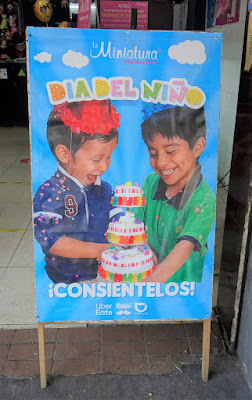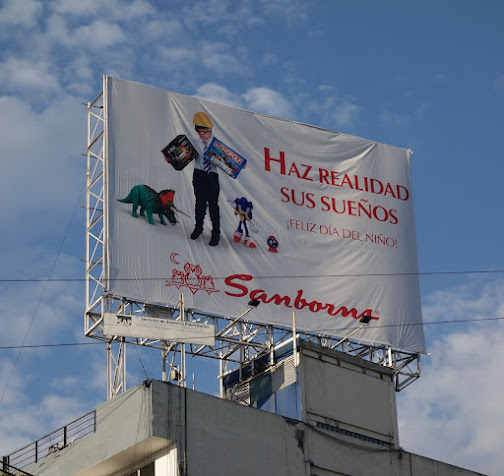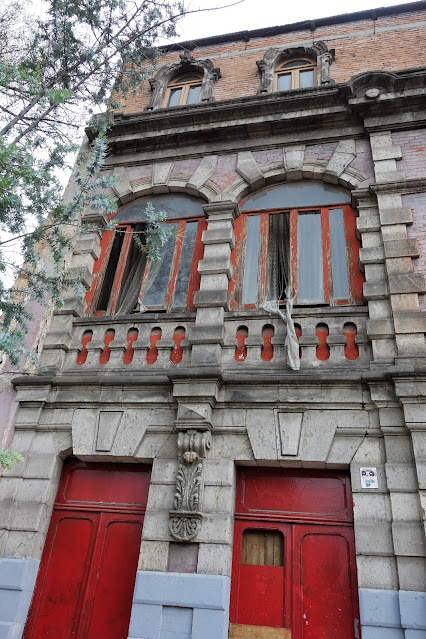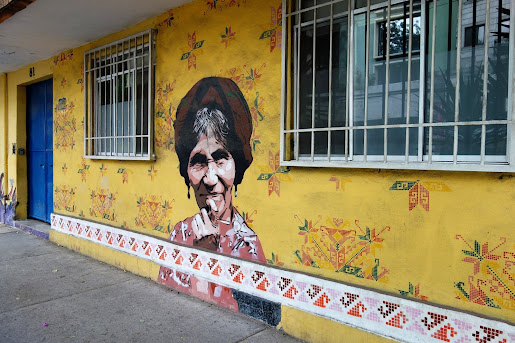If you look at my blog list, in the right hand margin, you will see one which is called "Gringopotpourri". It is written by a young fellow (well, younger than I am) named Scott who has traveled the world far more extensively than I. However, one of his favorite places in the world is Mexico City, and he even lived here for almost two years working as an English teacher.
He and I have been commenting on each other's blogs for some time now. When he informed that he was planning a return trip to Mexico City this spring, and that it coincided with my stay here, we made plans to get together and finally meet each other face to face.
Last Thursday we decided to have breakfast together. I met him at the San Pedro de los Pinos subway station which is just a short walk from my apartment. From there we walked a few blocks to a little cafe that opened not too long ago. It's called St. Peter's Coffee (yes, the name is in English). I have been to the cafe several times and even wrote about it here on the blog.
I had never had breakfast there before, but it was quite tasty. We had devoured most of it before I thought to take a photo.
Scott is familiar with the San Pedro de los Pinos neighborhood. In fact, when he lived down here, he was thinking of renting an apartment in this "colonia". It is a pleasant area that to me has the feel of small-town Mexico (at least until you come to the two busy thoroughfares of Avenida Patriotismo and Avenida Revolución).
An interesting site in San Pedro which I have written about in the past is a small archaeological zone called Mixcoac. Back when Scott lived in Mexico City, it was not open to the public. Now, however, you can walk around the ruins of this Aztec site, and admission is free. Since we were in the neighborhood, Scott wanted to see it, and I joined him.
The archaeological site is not especially impressive. It is just a small pyramid and the foundations of a ceremonial area which was dedicated to Mixcoatl, the Aztec god of the hunt. But it is quite cool that these pre-Hispanic remains were discovered in the middle of a residential neighborhood in the shadow of a superhighway.
Practically beneath the elevated highway, there is a small museum which tells about the various archaeological sites in within the Mexico City area. Here Scott stands next to a statue of the Aztec god Mixcoatl.
It was a pleasure meeting up with Scott, and this week we have plans to meet again. He's going to take me to a place in Mexico City which I, in spite of my many visits here, have never seen before!



















































